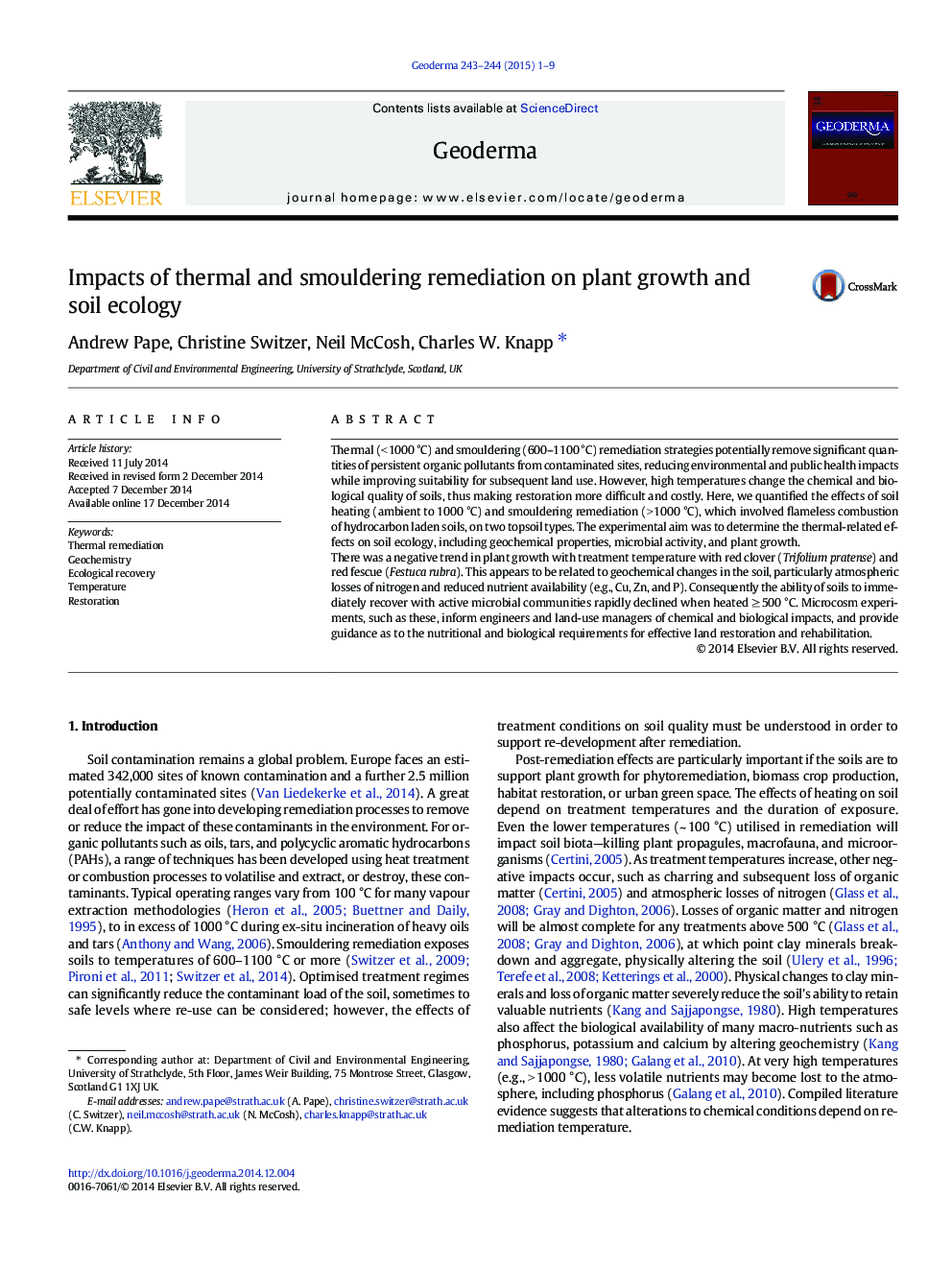| Article ID | Journal | Published Year | Pages | File Type |
|---|---|---|---|---|
| 4573199 | Geoderma | 2015 | 9 Pages |
•We simultaneously monitored changes in soil quality following thermal and smoulder remediation.•High temperature processes damage soil quality and impact restoration.•The ability of biological communities to recover depends on thermal regime.•Restoration strategies, including microbial and chemical amendments, must be considered to facilitate recovery process.
Thermal (< 1000 °C) and smouldering (600–1100 °C) remediation strategies potentially remove significant quantities of persistent organic pollutants from contaminated sites, reducing environmental and public health impacts while improving suitability for subsequent land use. However, high temperatures change the chemical and biological quality of soils, thus making restoration more difficult and costly. Here, we quantified the effects of soil heating (ambient to 1000 °C) and smouldering remediation (> 1000 °C), which involved flameless combustion of hydrocarbon laden soils, on two topsoil types. The experimental aim was to determine the thermal-related effects on soil ecology, including geochemical properties, microbial activity, and plant growth.There was a negative trend in plant growth with treatment temperature with red clover (Trifolium pratense) and red fescue (Festuca rubra). This appears to be related to geochemical changes in the soil, particularly atmospheric losses of nitrogen and reduced nutrient availability (e.g., Cu, Zn, and P). Consequently the ability of soils to immediately recover with active microbial communities rapidly declined when heated ≥ 500 °C. Microcosm experiments, such as these, inform engineers and land-use managers of chemical and biological impacts, and provide guidance as to the nutritional and biological requirements for effective land restoration and rehabilitation.
